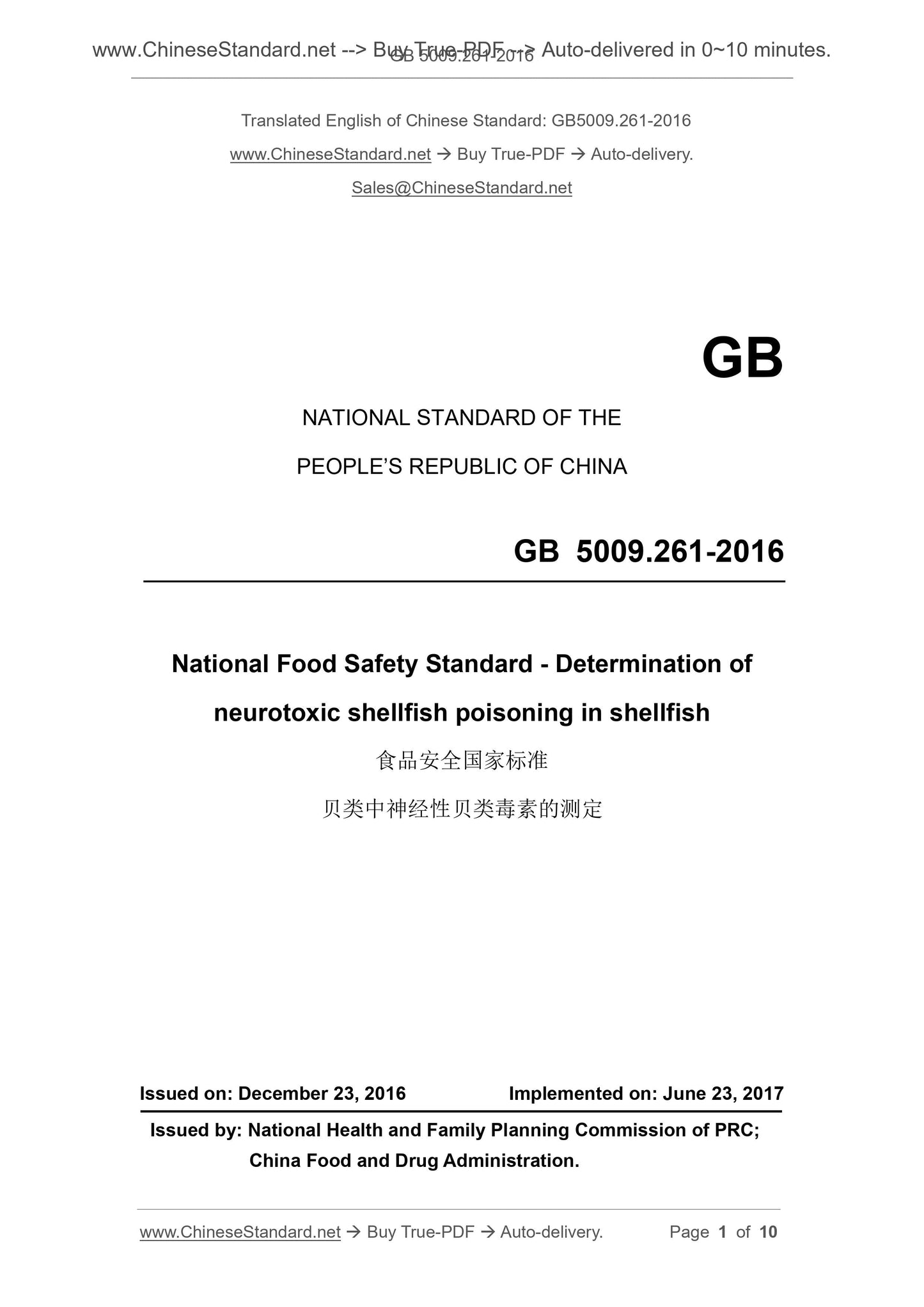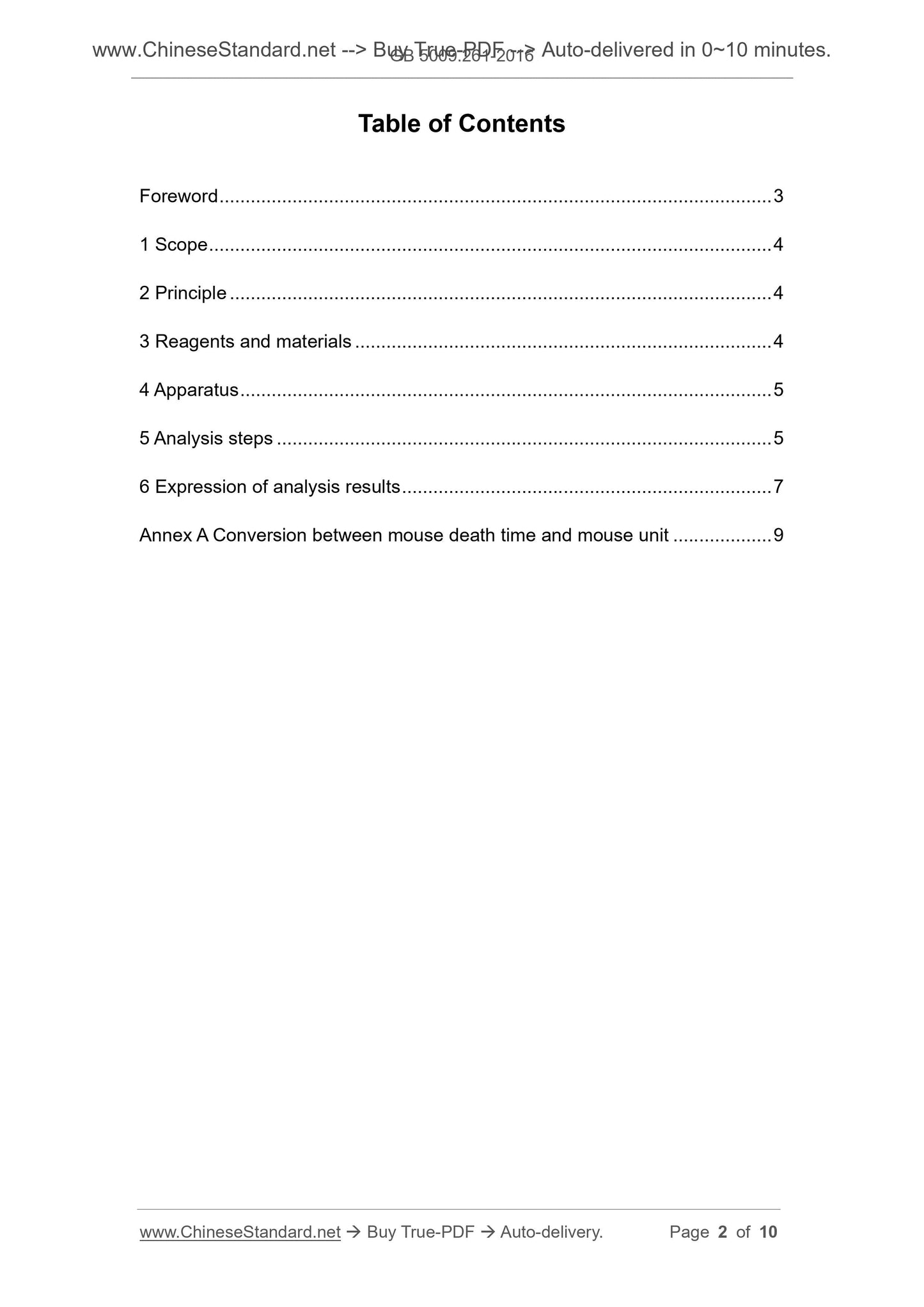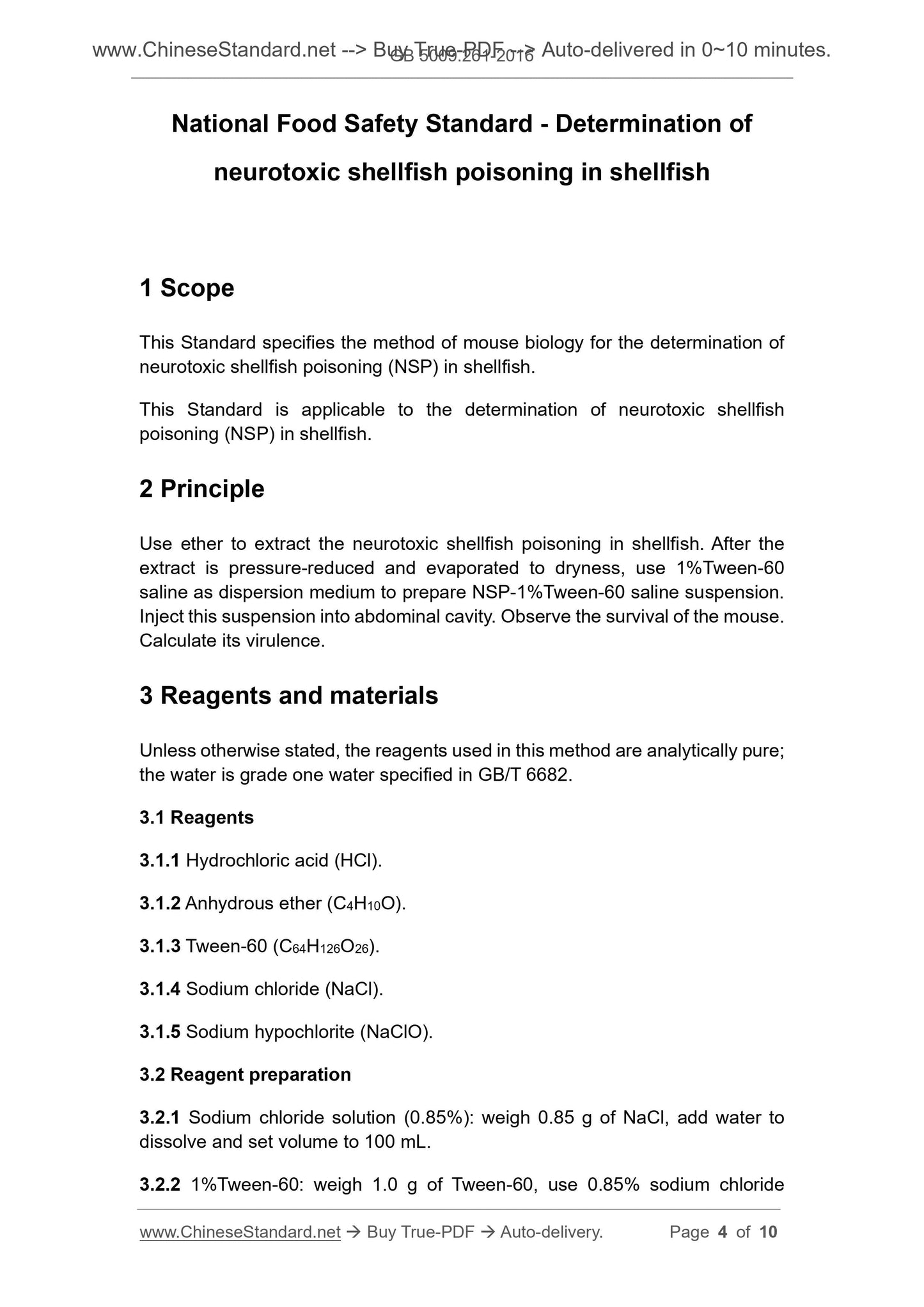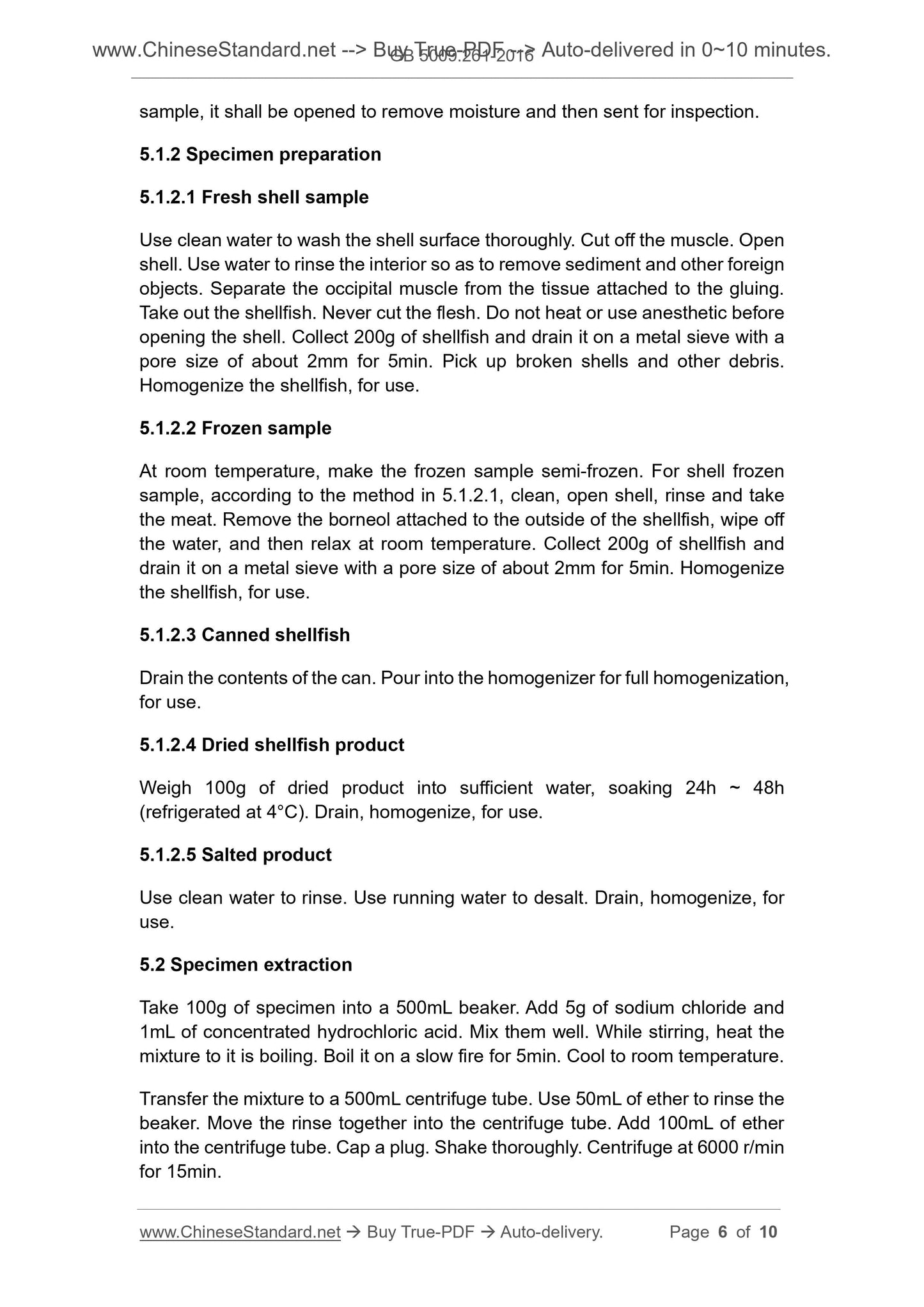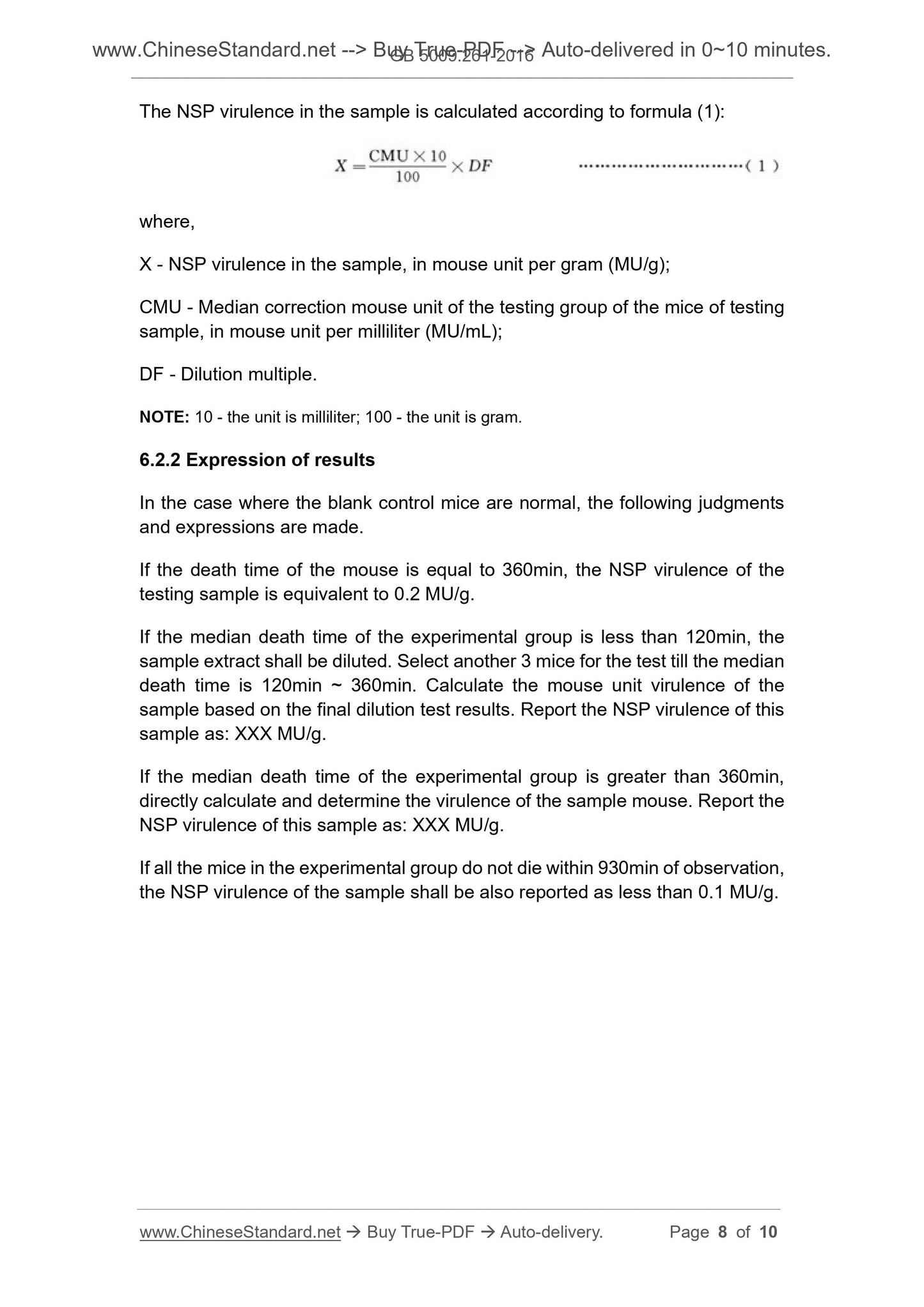1
/
of
5
www.ChineseStandard.us -- Field Test Asia Pte. Ltd.
GB 5009.261-2016 English PDF
GB 5009.261-2016 English PDF
Regular price
$90.00
Regular price
Sale price
$90.00
Unit price
/
per
Shipping calculated at checkout.
Couldn't load pickup availability
GB 5009.261-2016: National food safety standard - Determination of neurotoxic shellfish poisoning in shellfish
Delivery: 9 seconds. Download (and Email) true-PDF + Invoice.Get Quotation: Click GB 5009.261-2016 (Self-service in 1-minute)
Newer / historical versions: GB 5009.261-2016
Preview True-PDF
Scope
This Standard specifies the method of mouse biology for the determination ofneurotoxic shellfish poisoning (NSP) in shellfish.
This Standard is applicable to the determination of neurotoxic shellfish
poisoning (NSP) in shellfish.
Basic Data
| Standard ID | GB 5009.261-2016 (GB5009.261-2016) |
| Description (Translated English) | National food safety standard - Determination of neurotoxic shellfish poisoning in shellfish |
| Sector / Industry | National Standard |
| Classification of Chinese Standard | B51 |
| Classification of International Standard | 67.120.30 |
| Word Count Estimation | 7,754 |
| Date of Issue | 2016-12-23 |
| Date of Implementation | 2017-06-23 |
| Older Standard (superseded by this standard) | SN/T 1573-2013 |
| Regulation (derived from) | National Health and Family Planning Commission Notice No.17 of 2016 |
| Issuing agency(ies) | National Health and Family Planning Commission of the People's Republic of China, State Food and Drug Administration |
| Summary | This standard specifies a method for the determination of neurotoxic toxin (NSP) in shellfish. This standard applies to shellfish and products in the detection of neurotoxic toxins (NSP). |
Share
